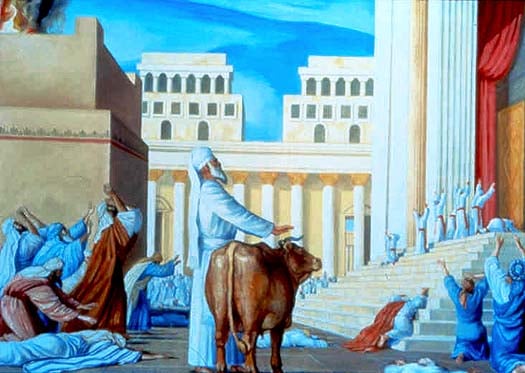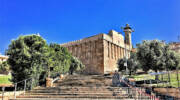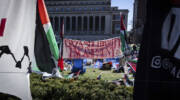An ordinary day in the Land of Israel is as holy as a Sabbath in the Diaspora. A Sabbath in the Land of Israel is as holy as Yom Kippur in the Diaspora. The holiness of Yom Kippur in the Land of Israel cannot be found anywhere else in the world. – The Holy Book of the Zohar
By Rabbi Ari Enkin, Rabbinic Director, United with Israel
Soon begins the holiest day of the year, Yom Kippur – the Day of Atonement (Leviticus 16:29 and 23:27). Yom Kippur is a fast day on which no food or drink is consumed for nearly 25 hours, along with a number of other restrictions all intended for us to transcend our human desires. Of course, those who are ill are not required to fast, nor are children.
It is an entire day spent in prayer, reflection, and atonement. In fact, the entire book of Jonah is read in the synagogue as it recalls the mass repentance of the people of Ninveh upon the rebuke of Jonah which is intended to inspire us to repent.
In Temple times the Yom Kippur service was an elaborate and detailed procedure in which the Kohen Gadol, the High Priest, would achieve atonement on behalf of the Jewish nation. It was only on Yom Kippur that the Kohen Gadol was permitted to enter the Holy of Holies to commune directly with God.
Yom Kippur is the only day of the year on which there are five prayer services whereas most other days of the year have three prayer services. The prayer book used on Yom Kippur is known as a “machzor”. In Israel the streets are empty – not a single car is to be found on the roads on Yom Kippur.
Even the most secular Jews observe Yom Kippur to some degree and attend services in the synagogue. We dare not forget that the peace and serenity of Yom Kippur was decimated in 1973 when air raid sirens blared throughout the land alerting people of the surprise Arab invasion – the Yom Kippur War.
White clothing is worn on Yom Kippur with the kittel, the long white thin coat that is worn by married men, the most dominant garment. The white symbolizes our desire for purity and forgiveness from our sins. Similarly, it symbolizes our desire to emulate angels who are referred to as being white as well as being totally detached from natural human desires, such as food and drink.
So too, the tallit is worn at all prayer services on Yom Kippur, it being the only time that a tallit is worn at night. A central feature of all five prayers is the “vidui”, the confession of sin. Yom Kippur closes with the neilah and maariv prayers followed by the blowing of the shofar with the jubilant singing of “Next Year in Jerusalem.”
Yom Kippur is About Change
Although Yom Kippur atones for one’s trespasses and transgressions against God, it does not atone for trespasses and offenses made to other people. In order to be forgiven by God for wronging another person one is required to seek his forgiveness. One is required to seek, confront, and appease anyone who we might have wronged throughout the year.
As one can very well see, Yom Kippur is ultimately about change. Changing one’s behavior, one’s habits, and one’s values for the better. Yom Kippur is an opportunity to become a better person. One of my favorite prayers recited on Yom Kippur is based on Jeremiah 18 called “clay in the hands of the potter”.
I urge you to use Yom Kippur to reflect on your past, present, and future, to remember that we are all clay in the hands of the Supreme Potter. Let God enter your heart and mold you into a better person. I wish all of you a meaningful and spiritually productive Yom Kippur.
May we all be written and sealed in the Book of Life!

Do You Love Israel? Make a Donation - Show Your Support!
Donate to vital charities that help protect Israeli citizens and inspire millions around the world to support Israel too!
Now more than ever, Israel needs your help to fight and win the war -- including on the battlefield of public opinion.
Antisemitism, anti-Israel bias and boycotts are out of control. Israel's enemies are inciting terror and violence against innocent Israelis and Jews around the world. Help us fight back!























